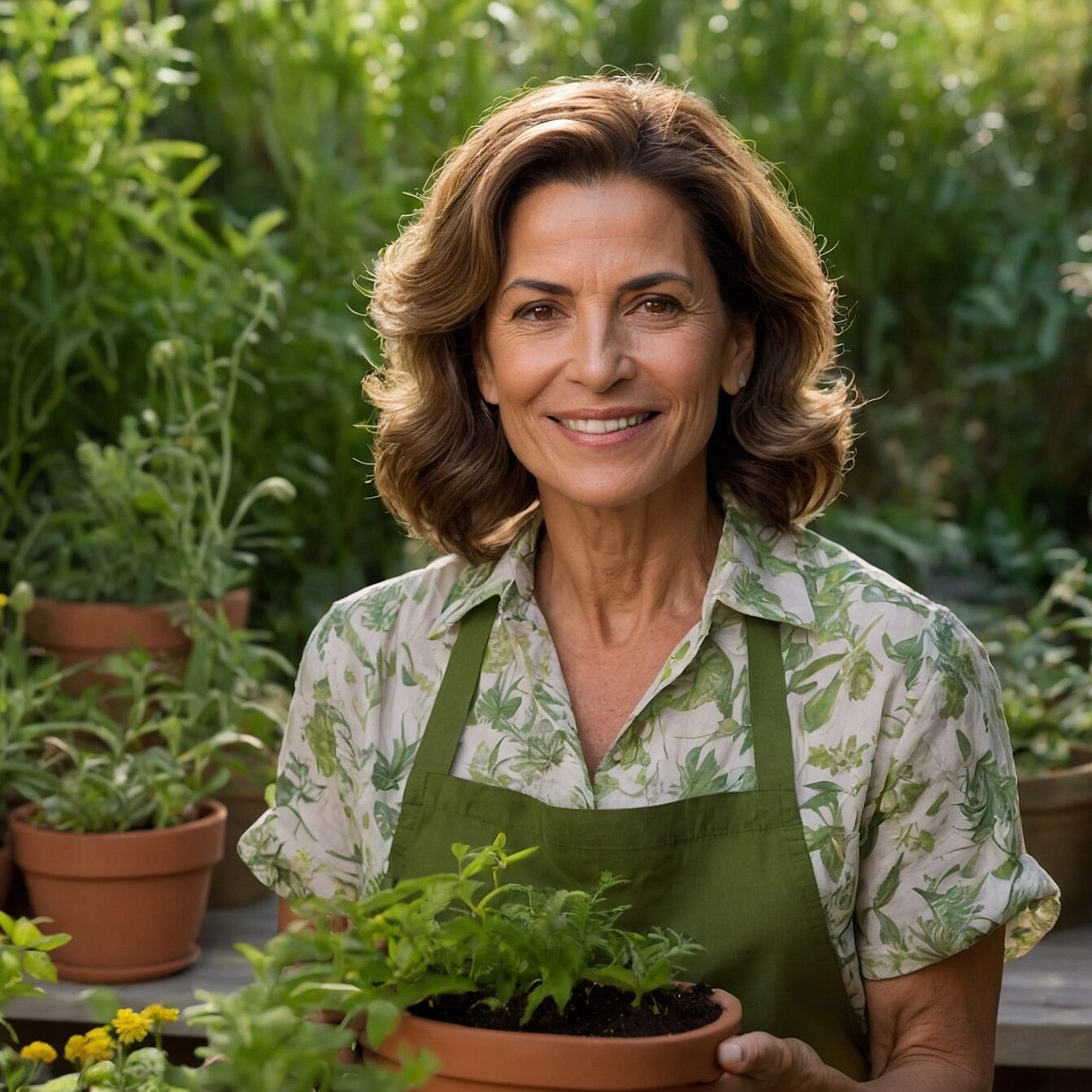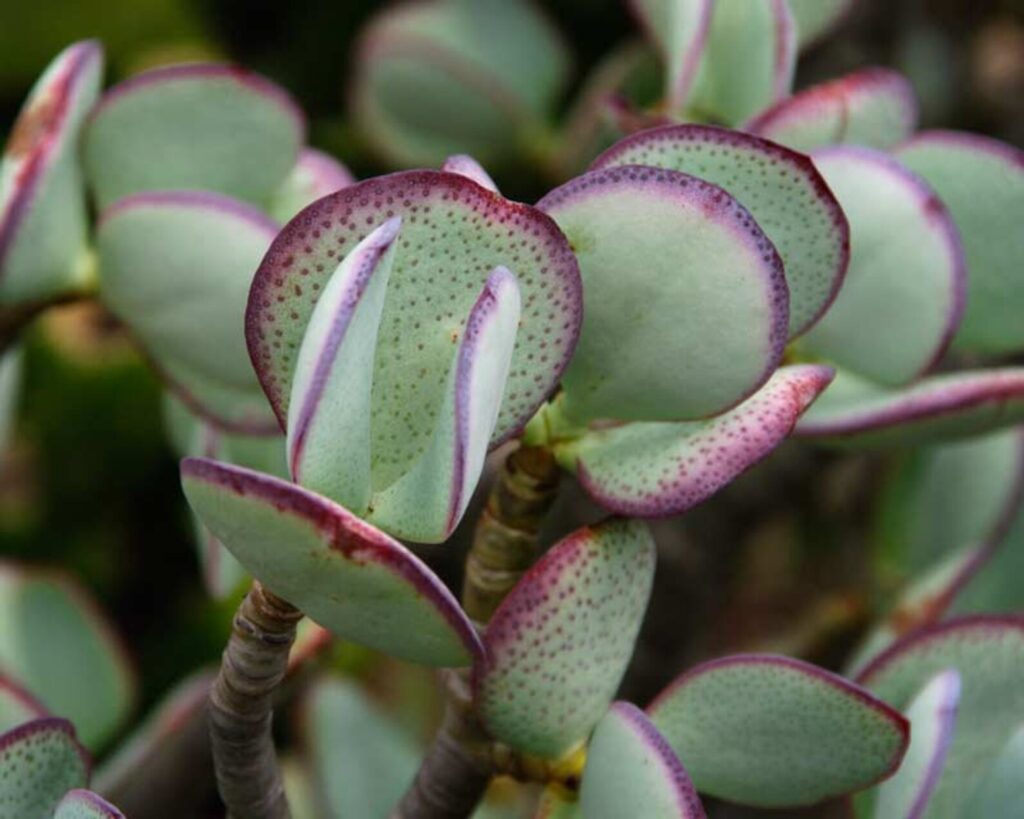Table of Contents
Introduction
Introduction to Crassula
Crassula are a genus of succulent plants that are widely appreciated for their beauty and variety. Originating mainly in South Africa, these plants stand out for their ease of cultivation and ability to adapt to different environments. With more than 200 types of Crassula, they come in an incredible diversity of shapes, sizes and colors, making them popular among gardening enthusiasts and succulent collectors.
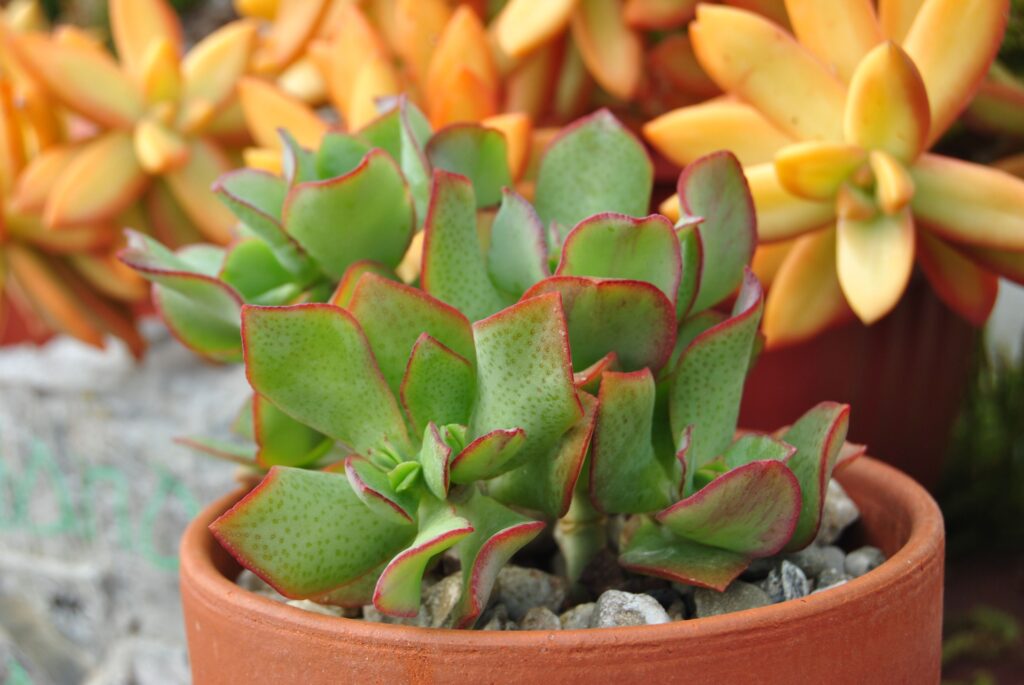
Importance and Benefits
Growing types of Crassula offers several benefits that go beyond their ornamental appearance. Here are some of the main reasons why you should consider having these plants in your garden or home:
- Ease of Care: Crassula are known for being low-maintenance plants. They require little water, making them ideal for those who don’t have much time for daily care. Moderate watering and exposure to indirect light are enough to keep these plants healthy.
- Beauty and Variety: With a wide range of species, Crassula can suit any style of decoration. From the bright green leaves of Crassula ovata to the intriguing shapes of Crassula perforata, there’s a Crassula to suit every taste.
- Resistance: These plants are very resistant and can thrive in conditions that would be challenging for other plants. They are ideal for both indoors and outdoors, adapting well to different climates.
- Environmental Benefits: Like all plants, Crassula help purify the air by removing toxins and releasing oxygen. This contributes to a healthier indoor environment.
- Simple propagation: Crassula propagate easily through leaves and stems. This means you can quickly expand your collection or share cuttings with friends and family.
1. Crassula ovata (Jade Plant)
Description and appearance
Crassula ovata, commonly known as Jade Plant, is one of the most popular and easily recognizable succulents. Its leaves are fleshy, oval and bright green, often with reddish edges when exposed to intense light. The leaves grow in opposite pairs along woody stems and can form a bushy structure that resembles a small tree. When well cared for, the Jade Plant can produce small white or pink star-shaped flowers during the winter.
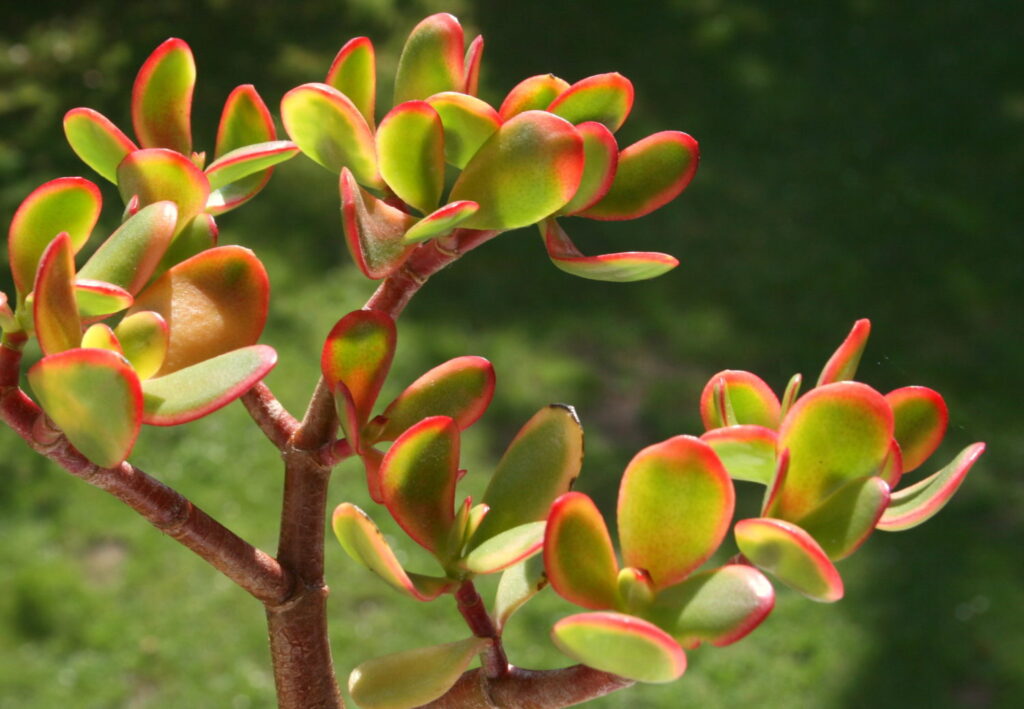
Care and cultivation
Caring for Crassula ovata is fairly straightforward, making it an excellent choice for both beginners and experienced gardeners. Here are some essential tips:
- Soil type: It prefers well-drained soil. A substrate for cacti and succulents is ideal, as it prevents water from accumulating in the roots.
- Watering: Watering should be moderate. Let the soil dry out completely between waterings to avoid root rot. In winter, the frequency of watering should be reduced.
- Sun exposure: The Jade Plant thrives in places with bright indirect sunlight. It can tolerate direct sunlight, but it should be introduced gradually to avoid burning the leaves.
- Temperature: It prefers temperatures between 15°C and 24°C, but can tolerate lower temperatures as long as they don’t fall below 5°C.
- Fertilizing: Use a balanced and diluted fertilizer during spring and summer to promote growth.
Curiosities
Crassula ovata is not only a beautiful and easy-care plant; it also carries deep symbolism:
- Prosperity and Good Luck: In Chinese culture, the Jade Plant is often associated with good luck and prosperity. It is common to see it in homes and businesses as a symbol of wealth and financial success.
- Feng Shui: In Feng Shui, the Jade Plant is believed to attract positive energies and good vibes. It is often placed near the entrance to houses or in the south-east corner, which is known as the corner of wealth.
- Longevity: The Jade Plant can live for many decades if well cared for, becoming a true member of the family over time.
With its enduring beauty and positive symbolism, Crassula ovata is a charming choice for any environment, bringing both aesthetic and symbolic benefits.
2. Crassula perforata (Sapphire Necklace)
Description and appearance
Crassula perforata, popularly known as Colar-de-Safira, is a charming succulent with a unique appearance. Its leaves grow in opposite pairs along the stems, forming a spiral structure that resembles a string of beads. The leaves are triangular, fleshy and have finely serrated edges. Their color varies from a soft green to a bluish-gray, often with reddish margins, especially when exposed to intense sunlight. This succulent can grow into a low bushy or hanging structure, perfect for hanging baskets.
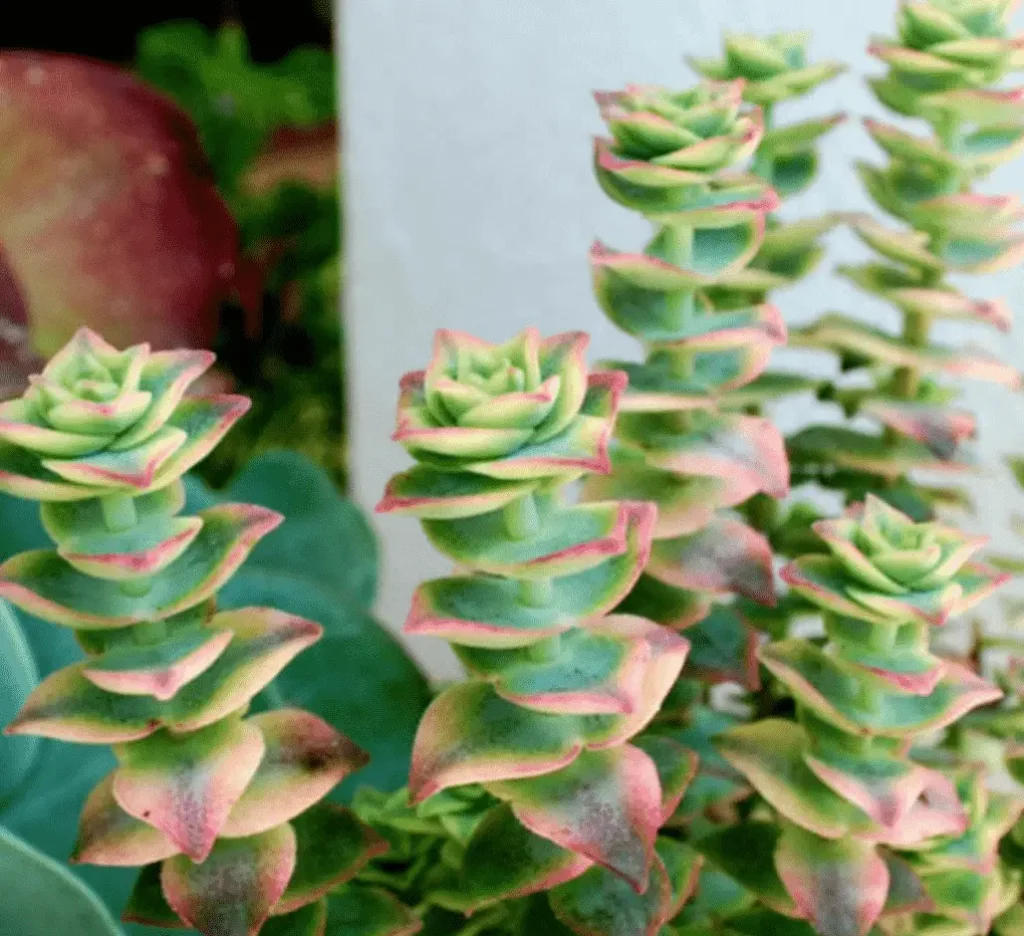
Care and cultivation
To keep Crassula perforata healthy and vibrant, follow these care tips:
- Soil type: Use a well-drained substrate, such as a mixture for cacti and succulents, which will prevent water from accumulating in the roots.
- Watering: Water moderately, allowing the soil to dry out completely between waterings. In winter, reduce the frequency of watering as the plant enters a period of dormancy.
- Light: Crassula perforata prefers bright indirect sunlight, but can tolerate a few hours of direct sunlight a day. Exposure to the sun helps to intensify the colors of the leaves.
- Temperature: Ideally, keep the plant at temperatures between 15°C and 24°C. It can withstand lower temperatures, as long as they don’t drop below 5°C.
- Fertilizing: During spring and summer, feed the plant with a balanced, diluted fertilizer once a month to promote vigorous growth.
Curiosities
Crassula perforata has a fascinating history and origins, as well as being an excellent choice for decorative arrangements:
- History and Origins: Originally from South Africa, Crassula perforata is adapted to dry and rocky climates, which explains its resistance and low water requirement. Its name “perforata” refers to the appearance of the leaves, which seem to be perforated or stacked.
- Tips for Decorative Arrangements: Due to its unique shape and attractive colors, Crassula perforata is ideal for creating succulent arrangements in decorative vases, hanging baskets and terrariums. Combine it with other succulents of different textures and colors for an impressive visual effect.
- Aesthetics and Design: Its spiral structure and colorful leaf edges make this plant an interesting addition to any succulent collection, providing a focal point in any arrangement.
With its spirally arranged leaves and fascinating coloring, Crassula perforata is a plant that not only adds beauty to the environment, but also brings a touch of exoticism and sophistication.
3. Crassula capitella (Acampanada)
Description and appearance
Crassula capitella, also known as Acampanada, is a visually striking succulent, recognizable by its pointed, reddish leaves. The leaves are narrow, sharp and grow in compact rosettes. As the plant matures, the rosettes can elongate and form spreading stems, creating a lush and colorful appearance. The color of the leaves can vary from a light green to an intense red, especially when exposed to full sun, making this succulent a standout piece in any garden or plant arrangement.
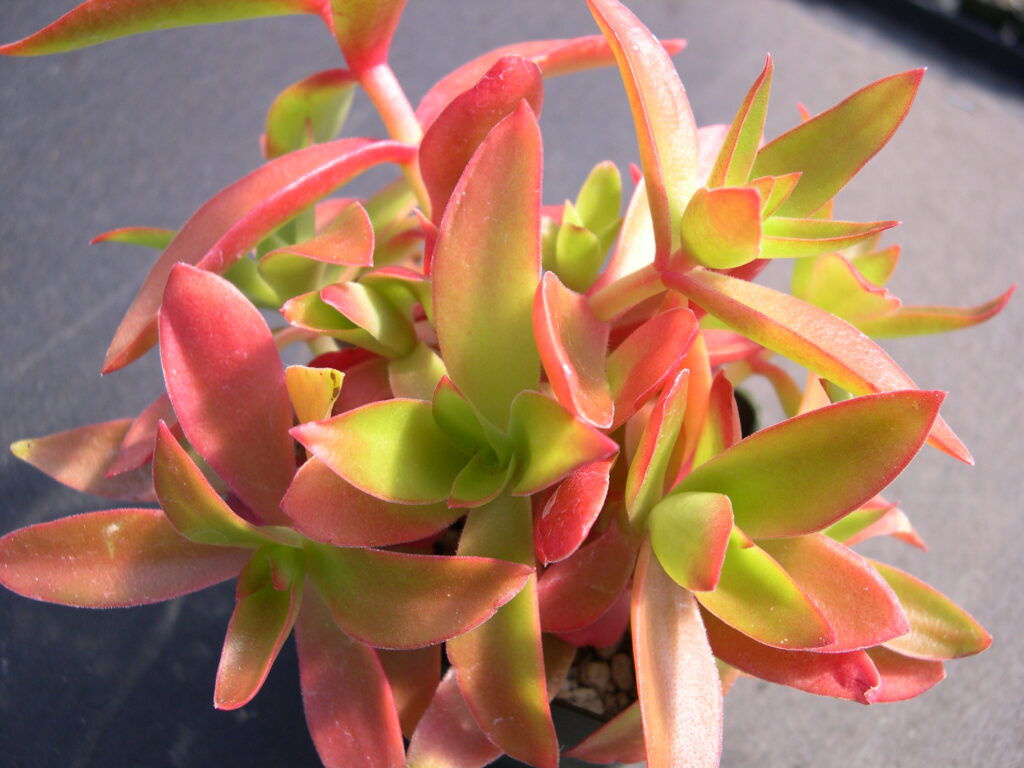
Care and cultivation
To ensure that Crassula capitella thrives, follow these care guidelines:
- Soil Type: It prefers well-drained soil, such as a mix of cacti and succulents, which helps prevent water retention in the roots.
- Watering: Water the plant moderately, allowing the soil to dry out completely between waterings. During the winter, reduce the frequency of watering to prevent root rot.
- Light: Crassula capitella needs direct sunlight to develop its vibrant colors. Place it in a spot where it receives at least six hours of sun a day to promote reddish pigmentation.
- Temperature: It does well at temperatures between 15°C and 24°C, but can tolerate lower temperatures as long as they don’t drop below 5°C.
- Fertilizing: During the months of active growth, in spring and summer, apply a balanced, diluted fertilizer once a month to encourage healthy growth.
Curiosities
Crassula capitella is valued not only for its distinctive appearance, but also for its applications in landscaping and succulent arrangements:
- Landscaping uses: Due to its vibrant coloring and attractive shape, Crassula capitella is often used in succulent gardens, borders and landscape arrangements. Its ability to spread and cover the ground makes it an excellent choice for filling spaces in flower beds.
- Succulent arrangements: In succulent arrangements, Crassula capitella adds a touch of color and texture. It is a popular choice for container gardens, terrariums and centerpieces. Its vibrant red color can create striking contrasts when combined with other green or silver-toned succulents.
- Aesthetics and Design: The pointed shape of the leaves and the variable coloring make this plant a versatile decorative element, suitable for both indoor and outdoor environments.
Crassula capitella is a succulent that not only beautifies a space with its pointed leaves and intense colors, but also offers versatility in landscaping and succulent arrangements, making it a popular choice for gardeners and plant designers.
4. Crassula arborescens (Blue Jade Plant)
Description and appearance
Crassula arborescens, popularly known as the Blue Jade Plant, is a succulent with a robust and distinctive appearance. Its leaves are rounded, fleshy and have a bluish or silver-gray hue, often with reddish edges. These leaves grow in opposite pairs along the stems, which become woody as the plant ages, giving it a bushy, compact shape. When well cared for, Crassula arborescens can reach a height of up to 1 meter, making it an eye-catcher in gardens as well as indoors.
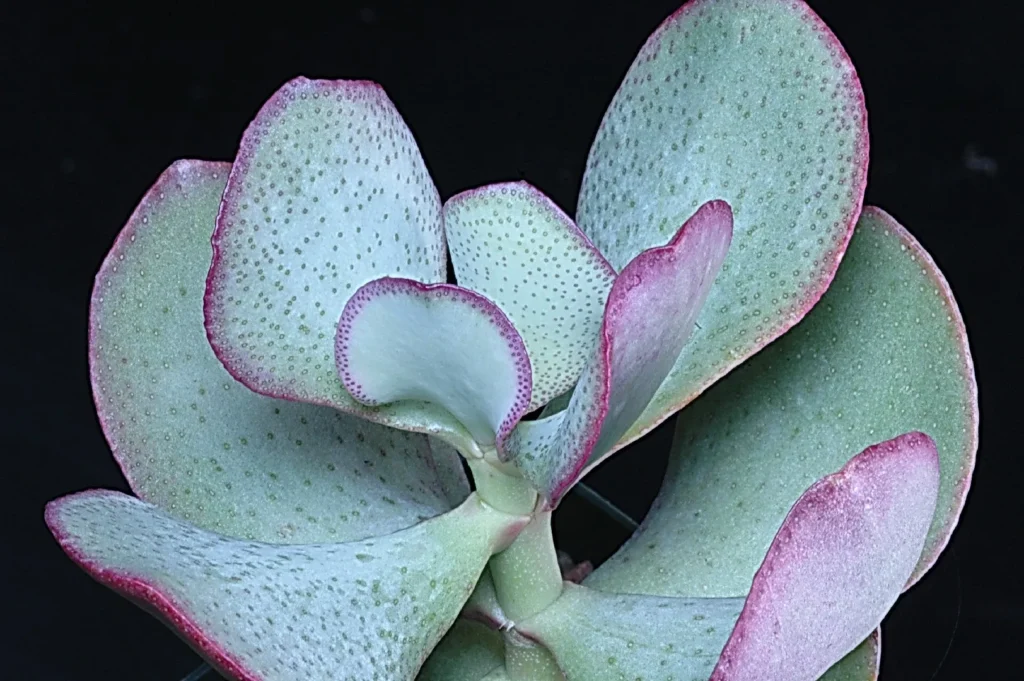
Care and cultivation
To ensure that Crassula arborescens grows healthily and vigorously, consider the following care guidelines:
- Soil type: Use a well-drained soil, such as a specific mix for cacti and succulents, to avoid water accumulating in the roots.
- Watering: Water the plant moderately, allowing the soil to dry out completely between waterings. During the winter, reduce the frequency of watering, as the plant enters a period of dormancy.
- Light: Crassula arborescens prefers bright indirect sunlight, but can also tolerate a few hours of direct light. Exposure to light helps maintain the bluish color of the leaves.
- Temperature: Ideally, keep the plant at temperatures between 15°C and 24°C. It can tolerate lower temperatures, as long as they don’t drop below 5°C.
- Fertilizing: During spring and summer, feed the plant with a balanced, diluted fertilizer once a month to promote growth.
Curiosities
Crassula arborescens differs from other Crassula varieties in several unique characteristics:
- Color difference: While many Crassula have green or reddish leaves, Crassula arborescens is known for its bluish or silver-gray leaves, which give it a distinctive and elegant look.
- Shrub form: Unlike other Crassula that grow in a creeping or rosette form, Crassula arborescens develops a shrub form, with woody stems that give it a mini-tree appearance.
- Size: This species can grow significantly taller than many other Crassula, reaching up to 1 meter in height under ideal conditions.
- Decorative uses: Due to its unique shape and color, Crassula arborescens is an excellent choice for succulent gardens, potted arrangements and interior decoration. Its robust and elegant presence makes it an attractive focal point in any composition.
With its bluish leaves and bushy shape, Crassula arborescens not only stands out for its beauty, but also for its ease of cultivation and maintenance, making it a valuable addition to any plant collection.
5. Crassula rupestris (Rosary)
Description and appearance
Crassula rupestris, commonly called Rosarium, is a charming succulent known for its small, compact leaves arranged in pairs along thin, branched stems. The leaves are usually green with reddish edges, and their triangular shape resembles small rosary beads, hence their popular name. Mature plants can develop small flowers in shades of pink or white, adding a delicate touch to their overall appearance. Crassula rupestris grows densely, forming lush, attractive foliage.
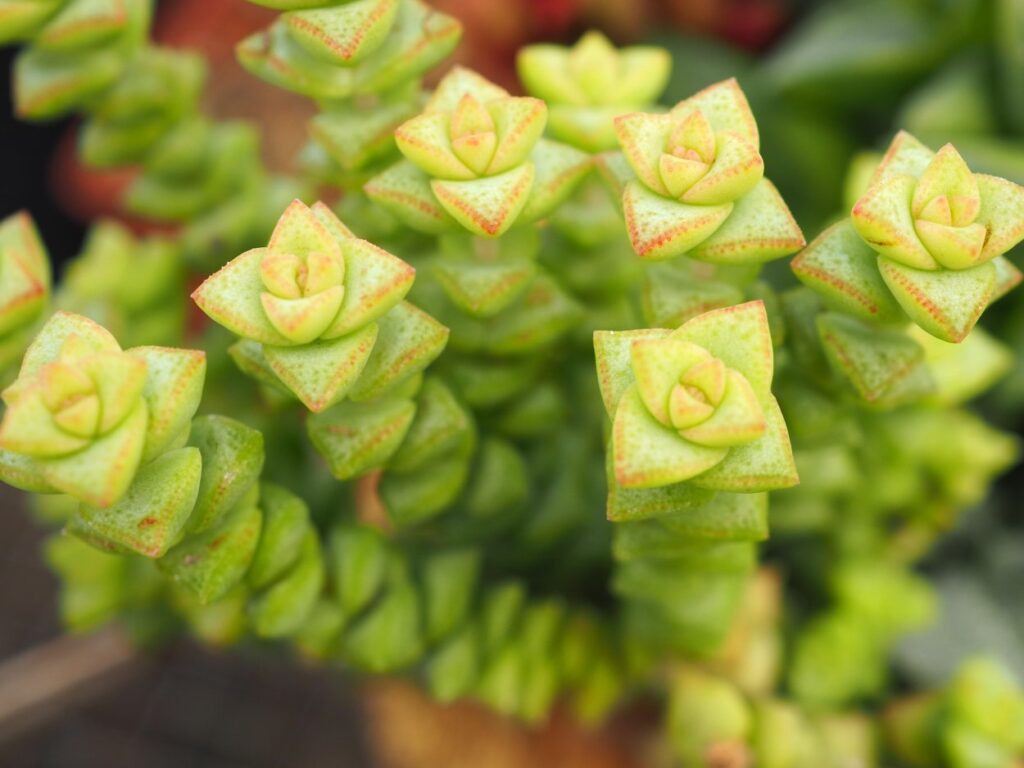
Care and cultivation
To ensure that Crassula rupestris grows healthily, follow these recommendations:
- Soil type: It prefers a well-drained soil, such as a mixture for cacti and succulents, to avoid water accumulating in the roots.
- Watering: Water the plant moderately, allowing the soil to dry out completely between waterings. During the winter, reduce the frequency of watering to prevent root rot.
- Light: Crassula rupestris thrives in bright indirect sunlight, but can tolerate a few hours of direct sunlight a day. Bright light helps to intensify the reddish color of the leaf edges.
- Temperature: Keeps well at temperatures between 15°C and 24°C. Avoid temperatures below 5°C to avoid damaging the plant.
- Fertilizing: During spring and summer, apply a balanced and diluted fertilizer once a month to promote vigorous growth.
Curiosities
Crassula rupestris is valued not only for its unique appearance, but also for its many decorative applications:
- Use in Hanging Arrangements: Due to its branched shape and dense growth, Crassula rupestris is ideal for hanging arrangements. Its hanging foliage creates an impressive visual effect when placed in hanging baskets or raised vases.
- Terrariums: This succulent is an excellent choice for terrariums due to its compact size and easy maintenance. It adds texture and color, creating charming mini landscapes in closed or open terrariums.
- Versatility in Decoration: In addition to hanging arrangements and terrariums, Crassula rupestris can be used in table arrangements, rock gardens and as a border plant in succulent gardens. Its delicate appearance and controlled growth make it a versatile plant for a variety of compositions.
With its compact and attractive leaves, Crassula rupestris is a charming addition to any succulent collection, offering beauty and versatility in a variety of decorative arrangements.
Conclusion
Types at a glance
In this article, we’ve explored five fascinating types of Crassula:
- Crassula ovata (Jade Plant): Known for its fleshy, green leaves with reddish edges, symbolizing prosperity.
- Crassulaperforata (Sapphire Necklace): Notable for the spiral structure of its leaves, which vary in color from green to reddish.
- Crassula capitella (Acampanada): Recognizable by its pointed leaves and vibrant color, ranging from green to red.
- Crassula arborescens (Blue Jade Plant): It has bluish or silver-gray leaves and a bushy form.
- Crassula rupestris (Rosary): Characterized by its small, compact leaves and reddish edges, ideal for hanging arrangements and terrariums.
General benefits
Growing Crassula offers a number of benefits:
- Ease of Care: They are hardy plants that require little maintenance and are ideal for both beginners and experienced gardeners.
- Variety and Beauty: The diversity of shapes, colors and textures makes Crassula an aesthetic and interesting addition to any plant collection.
- Decorative Versatility: They can be used in a variety of compositions, from succulent gardens and hanging baskets to terrariums and table arrangements.
- Symbolic Benefits: Some varieties, such as the Jade Plant, are associated with prosperity and good luck, as well as being used in Feng Shui to attract positive energies.
Frequently Asked Questions
How to care for the Crassula expansa plant?
To care for the Crassula expansa plant, it is important to provide it with an environment with plenty of indirect light. Water moderately, allowing the soil to dry out between waterings to prevent root rot. Use well-drained soil and fertilize occasionally during spring and summer to promote healthy, robust growth.
How to care for Crassula Multicava?
Crassula multicava is a succulent that requires well-drained soil and moderate watering. It prefers indirect sunlight to full sun and can tolerate drier conditions. During the winter, reduce watering to avoid excess moisture. Fertilize the plant once a month in spring and summer to promote vigorous growth.
How to look after a Crassula ovata?
To care for Crassula ovata, also known as Jade Plant, it is essential to provide it with bright sunlight in full sun. Water deeply when the soil is dry, but avoid waterlogging. Use well-drained soil and fertilize the plant during spring and summer to stimulate growth. Protect it from extremely cold temperatures and it will thrive as a hardy, easy-care succulent.
